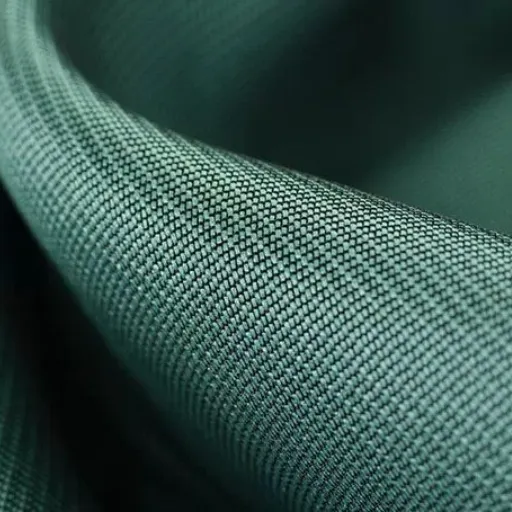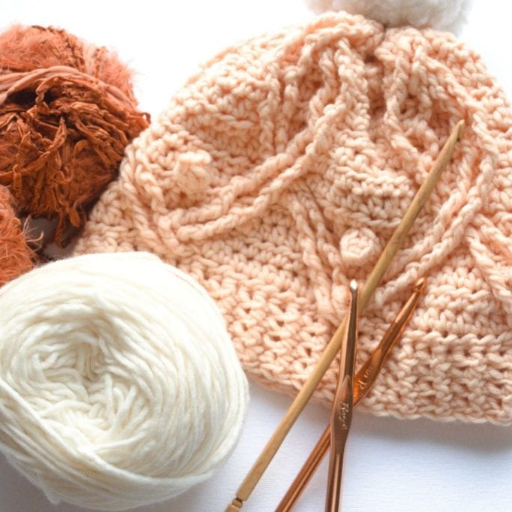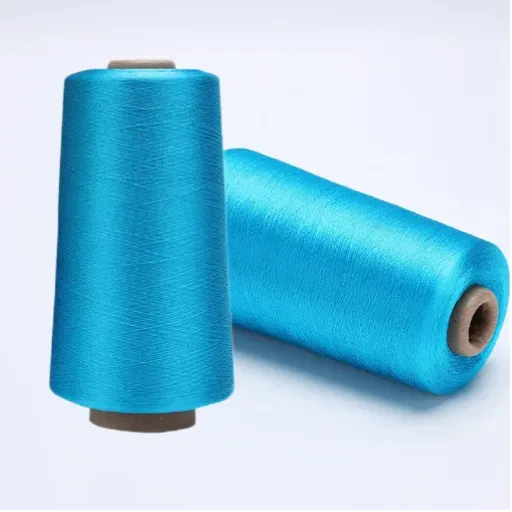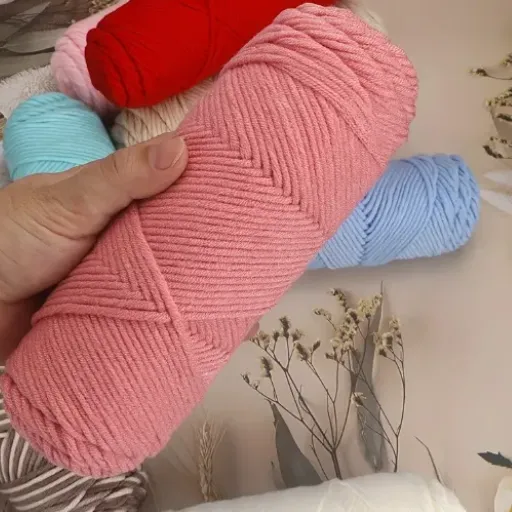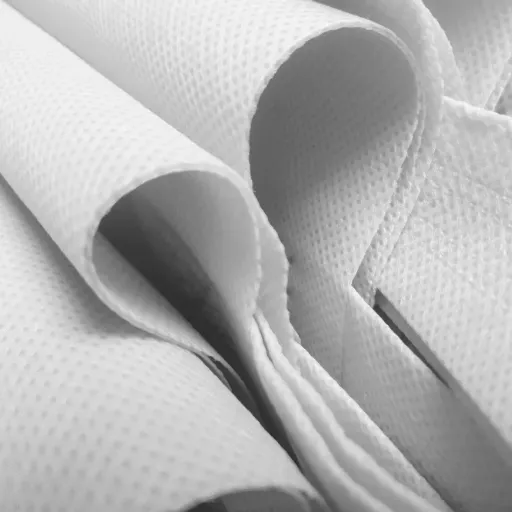Among the reasons why acrylic yarn is widely used in knitting and crocheting is its cost, strength, and the many color choices available. Nevertheless, you have to take good care of your handmade items if you want them to look nice and last long. If you are a novice who does not know how to treat his/her newest scarf or if you are a professional looking for ways to maintain the quality of your acrylic stuff, then this guide is the right one for you. We will explain every step from washing to the dos and don’ts of acrylic yarn care. By the time you finish this guide, you will have learned everything necessary to keep your textile and crochet projects always looking fresh and fabulous.
Introduction to Acrylic Yarn

Durability and Versatility of Acrylic Yarn
Acrylic yarn is very durable and this feature has made it very popular among people using it for their textile and crochet projects that require regular washing or frequent use. One of the main reasons for this is the fact that it is a synthetic fiber which makes it very resistant to abrasion compared to the natural fibers. Moreover, unlike wool or cotton, the acrylic fibre does not tend to shrink or lose its shape easily, and hence it retains its original form for a long time. Hence, blankets, scarves and everyday clothing made of acrylic can be considered durable items that are meant for long use.
On the other hand, the versatility of acrylic yarn is another important point in its favor. The amazing spectrum of colors, textures, and weights enables it to fit to several applications, ranging from complex designs to soft, simple ones. Acrylic yarn is also comparable to the look and feel of the higher-end fibers such as wool, thus being an inexpensive yet aesthetically pleasing alternative. It has been a choice fiber for both new and experienced artists for its lightness and the fact that it is easy to work with.
Moreover, acrylic yarn has been characterized as easy to care and therefore requiring less treatment than delicate natural fibers. It can be washed in the machine and dries quickly which is a nice feature for busy people. Resistance to stains and fading ensures that acrylic yarn projects will look bright and vibrant with very little effort involved, thus contributing to its wide popularity. These features together make acrylic yarn a perfect option for both creative and practical purposes.
Why Proper Care is Essential
Proper care is necessary in the process of raising the quality and life of acrylic yarn projects. Acrylic yarn, being a popular choice because of its durability and damage resistance, neglect can still spoil the whole thing by introducing problems like pilling, loss of softness, and a decrease of overall appearance. Proper attention will make your creations still look and work over the years.
Using the wrong washing or drying methods can lead to damage of the fibers and they can become either weak or lose their original texture. So it is a must to strictly adhere to the suggested guidelines which include washing in cold or lukewarm water with a gentle detergent and no heat or very low heat during drying. Steps like this one help in keeping the yarn’s quality intact and thus avoiding of getting the fibers worn out too early.
Apart from that, the proper care also lessens the impact on the environment by the artificial lifespan of handmade things, thus making them seldom replaced. The maintenance that has been done with consideration thus not only conceals the aesthetic and practical properties of acrylic yarn projects but also coincides with the eco-friendly practices by promoting through-taking and thus encouraging the long-term use.
Overview of the Care Guide
Appropriate care for acrylic yarn projects guarantees their durability, usability, and beauty. Acrylic yarn, being a man-made fiber, is a strong and economical substitute to natural ones, but the synthetic fiber needs proper maintenance methods to keep its bright colors and flexibility for a longer time. This manual passes on essential care techniques along with eco-friendly tips to aid users in keeping their handcrafted items while at the same time lessening their carbon footprint.
Washing Guidelines
Acrylic yarn can be washed in the machine generally, which makes it very convenient for daily use. However, a delicate cycle with cold or lukewarm water is recommended, as hot water can make the fibers weaker and lead to shrinkage. It is said that a 30°C wash can save 60% more energy as compared to a 60°C wash thus being environment-friendly and at the same time safeguarding your projects. Furthermore, it is necessary to use mild detergents that do not contain any harsh chemicals so as not to ruin the yarn.
Drying Recommendations
Acrylic yarn dries fast but high temperatures from a dryer may alter the shape and make the fabric lose its softness. Rather, place your project flat on a clean towel in a cool shaded place and let it dry naturally. This technique keeps the fabric from stretching and is also a more energy-conserving option. Research reveals that air drying can cut indoor carbon emissions by up to 300 pounds per household each year, which is in line with the eco-friendly care approach.
Storage Tips
For soft and bright acrylic yarn projects, the storage to be cool and dry in places that are not under direct sunlight. Specially made storage bags that allow airflow will not just protect the items from pests and dust but also reduce moisture. Proper storage not only maintains the functional qualities of your art but also greatly prolongs its life.
Eco-Friendly Practices
Implementing environmentally sustainable maintenance routines for acrylic yarn projects indicates that you are trying to cut waste and encourage reuse. The versatility and toughness of acrylic make it excellent for long-term use, but getting familiar with practices like washing with energy-saving methods and air drying can help the planet even more. Moreover, donating or turning leftover yarn pieces into something new can keep waste down while making new projects.
When practicing these care methods and learning new ones continuously, you will not only save your acrylic yarn creations but also lessen the environmental impact of them and lead a more eco-friendly life.
Step-by-Step Instructions to Wash Acrylic Yarn
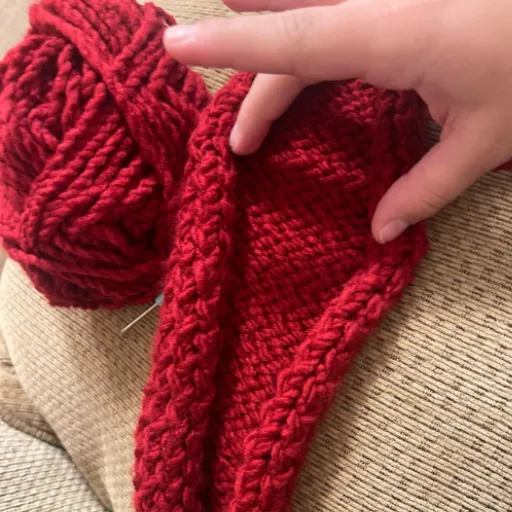
Machine Washing Acrylic Yarn
To wash acrylic yarn in a machine, it is very necessary to use a gentle cycle as a safeguard for the fibers. First, you need to put the acrylic yarn project in a mesh laundry bag which will keep it from getting tangled or snagged during the wash. Then, choose either cold or lukewarm water settings as hot water can cause the material to shrink or become weaker. Ascertain to use always a detergent that is of mild nature and safe for delicate or synthetic fabrics.
Fabric softeners should be avoided as they can leave a residue on the acrylic yarn that makes it less soft and changes the texture. When the wash cycle is over, take the item out immediately to avoid getting creases or having it stretched too much. If the yarn item has a lot of dirt on it, you might want to treat the stains with a tiny bit of diluted detergent before the wash begins.
As for drying, air drying is preferred over machine drying. Put the item down flat on a clean towel and mold it to its original size. This way, one can avoid stretching and also maintain the stitches’ integrity. Some acrylic yarns might withstand low heat in a dryer but it is always a good practice to check the care label for specific instructions so as not to cause irreparable damage.
Acrylic Yarn Hand Washing Techniques
First of all, fill a basin with lukewarm water and pour in a few drops of mild detergent when washing acrylic yarn by hand. You should check that the water temp is just right and not too hot or cold because extremes can hurt the fibers. Soak the yarn or the finished piece thoroughly and let it stay there for a few minutes. Swirl the item in the water very gently to cause soft motion and thereby avoid any pulling or rubbing of the fabric that can weaken the fibers.
Once washing is completed, pour the basin with soapy water and then fill it again with clean lukewarm water for rinsing. Careful movement of the piece in the water will help to wash away the detergent completely, and the rinse cycle will be repeated if it is necessary to be sure that no soap is left. Handle the yarn minimally to keep its strength and color.
To remove water, yes, you can press the yarn without twisting or wringing to get out the excess water. Put it on an absorbent towel that is clean and of the same size as the original; let it dry in the air overnight and in the shade or a warm area rather than outside where it might suffer damage or discoloration due to the sun’s rays or heat sources. This gentle method guarantees that acrylic yarn retains its quality and lasts longer.
Checking Labels and Care Instructions
Before you do anything else, check the label that comes with the acrylic yarn and that has been provided by the manufacturer as it is the most important source of information for the yarn’s care. The washing, drying, and general maintenance of the yarn will be revealed by the label. If you follow these instructions the yarn will keep its look and feel for a very long time. It is usually safe to say that most acrylic yarns can go into the washing machine, however, depending on the time and the settings they might not be so good, which is why the label’s advice is indispensable.
The labels also say if the yarn can be tumble-dried or if it should be air-dried. Some yarns might manage low heat, but others might get too hot or melt and therefore be damaged during drying. Hence, it is always wise to stay within the limits set by the washer and dryer and not compromise the yarn’s fibers.
Moreover, the care instructions additionally cover areas such as ironing, bleaching, and the use of fabric softeners. Acrylic usually does not get wrinkled, thus, ironing is seldom required. Also, harsh chemicals such as bleach can ruin the fabric. If you follow the care instructions, your acrylic yarn will still be very lively and strong after years of use on different projects.
Drying and Maintaining Acrylic Yarn Items
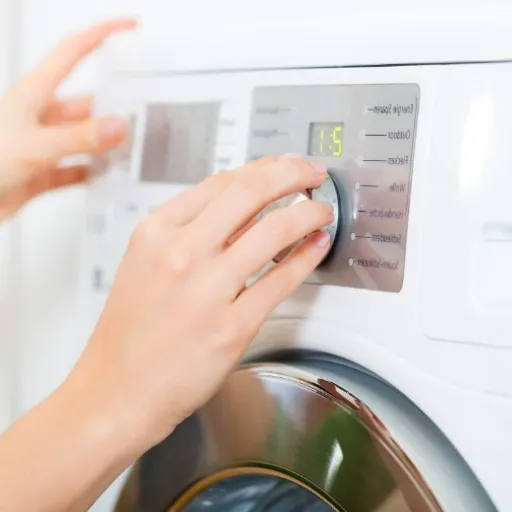
Best Practices for Drying
The proper way to dry acrylic yarn items is crucial because it determines their quality and durability. The first thing to do is wring out the water gently with careful squeezing and without using the wringing method, for it can harm the fibers. Next, place the item flat on a clean towel and reshape it to the original form. If you want to absorb more moisture, rolling the towel with the item and gently pressing can do the trick. Do not hang the wet acrylic items because they will lose their shape or stretch in due time.
The dryer can be used on the low heat setting for drying the items quickly, as acrylic can melt and lose its shape if subjected to high temperatures. Sources say the modern tumble dryer often comes with acrylic-safe settings that can safely speed up the drying process. However, it is better to check the care label of the specific yarn item before putting it in the dryer.
💡 Expert Tip: Air-drying even in a space that has good ventilation is one of the safest methods and it is especially true for delicate pieces like crocheted or knitted garments. According to a study conducted by textile care experts, air-drying maintains the integrity of acrylic fibers over 20% better compared to high-heat drying. The correct drying techniques applied will make your acrylic yarn projects vibrant and durable for many years.
Retaining the Softness of Acrylic Yarn
The use of appropriate washing and drying techniques is necessary in order to keep the acrylic yarn soft. Wash the acrylic items in cold or lukewarm water with a gentle detergent always. Detergents with harsh chemicals or very hot water can hurt the fibers and cause the yarn to be stiff. It is best to avoid washing methods that are too harsh, such as wringing and scrubbing, as these can change the shape and feel of your projects.
After washing, carefully squeeze out the water that is not needed without twisting or wringing the fabric. Place the item flat on a clean, dry towel for natural air-drying. Do not use a dryer unless it is necessary, and if you do, set it on the lowest possible heat to avoid damage. Air-drying is a process that retains the softness of acrylic yarn and reduces the fibers’ wear and tear.
Proper storage is another aspect that has a significant impact on maintaining the softness of the acrylic yarn. Keep the completed projects in a cool, dry area, away from sunlight and moisture, since these factors could cause the yarn to lose its properties. The method of folding and storing the items flat instead of hanging them helps to keep their original softness and avoids stretching. If you observe these simple guidelines, the softness, durability, and pleasure of using your acrylic yarn projects will last for many years.
Maintaining the Shape of Yarn Items
Correct treatment and storage are the necessary terms in order to retain the shape of handmade yarn products. Overstretching and putting heavy objects on top of your yarn projects must be avoided since excess weight can lead to deformation in the long run. Gentle cycles and cool water should be used for washing in order to lessen the risk of fibers losing their elasticity or becoming misshapen. Always reshape the item while it is still damp and place it flat to dry since this will help you maintain its original form.
Proper storage plays an important role as well. Instead of hanging the items, fold them carefully, because hanging can cause stretching or uneven pressure on the fabric. If you plan to store your items for a long time, wrap them with acid-free tissue paper and place them in a breathable container to avoid damage from moisture. To protect the fiber structure even more, keep the storage area cool and dry.
And finally, infrequent care assures the life of your yarn projects. Make it a point to inspect regularly the stored items for any signs of wear, pests, or environmental damage. Prompt action to repair small issues can prevent them from worsening, thus preserving both the shape and the overall quality of your creations for years. By applying these practical tips, you can maintain the beauty and functionality of your yarn projects as they were on the day of their making.
Common Mistakes to Avoid When Washing Acrylic Yarn

⚠️ Using Hot Water or High Heat
Hot water or high heat application can be very damaging to acrylic yarn because it is a synthetic fiber that does not tolerate high temperatures at all. The high heat can lead to melting, distorting, or making the fibers overly stiff, thus ruining the texture and appearance of your project. To avoid this, always wash acrylic yarn using cool or lukewarm water and do not set your dryers on the heat-generating settings that are intense.
When blocking acrylic yarn use, let us say, the steam blocking only when you are on very low heat settings and are fully aware of the risks involved. Steam can sometimes soften and reshape acrylic fibers permanently, and this is often termed the “killing” of the yarn. Although this is intentional in some projects, it can easily lead to irreparable mistakes if done inadvertently.
In the first place, you will also want to take care of your acrylic yarn projects gently, giving them a long life and good appearance, so go for the gentle care method. Hand washing with mild detergent in cool water is the safest method. If you have to machine wash the delicate cycle with cold water and place the project in a mesh laundry bag for protection are the steps to take. Air drying is highly recommended to avoid exposure to the high temperatures of the dryer. By following these steps, you will be able to maintain the quality of your acrylic yarn creations in a very effective way.
⚠️ Ignoring Care Labels
Care labels act as a guiding light for the proper and long-lasting maintenance of fabrics or materials. Not paying attention to these labels could result in the most common problems like shrinkage, color loss, and even permanent damage. These issues are usually the result of each fabric having its own specific requirements for washing, drying and ironing, which are all spelled out on the care label. Not following this advice will surely affect both the performance and the look of the item eventually.
Moreover, care labels play a protective role for the materials against potential misuse. As a case in point, some fabrics such as wool and silk might need very delicate cleaning in order not to stretch or lose their color. If one doesn’t adhere to the instructions given, he or she may inadvertently ruin the fabric or make it unrentable.
In consideration of the proper care for your garments or textile items, the care label’s instructions should be read and followed without fail. The recommendations given are usually based on the manufacturer’s testing and are very much in line with the material’s behavioral aspects. Thus, compliance with these instructions keeps the item from being unnecessarily worn and assures its good state for the longest period possible.
⚠️ Improper Drying Techniques
If drying techniques are not properly applied, then the result will be that the textiles will be damaged severely, and the damage will be in the form of shrinkage, fading, or even weakening of the fabric. One of the usual mistakes that people make is to use very high temperatures while drying in the machine, which means that the gentle fabrics will lose their take-up or will become less elastic. Only fabrics like wool or silk are very susceptible to drying out and will shrink or lose their stretch if the temperature is high. Over-drying can kill the garment by degrading the fibers and thus reducing the life span of your garment.
Another very serious issue is when people use to dry their textiles in the sun for long periods. Exposure to strong sunlight for such a long time can fade the colors and even weaken the fabric. This is mainly the case with brightly or darkly colored fabrics. A good drying method for such items is to dry them in the shade and in a well-ventilated area so their colors and strength will stay with them. The care label’s instructions are very important for specialty fabrics as they will save you from irreversible damage.
Cramming the dryer is another common mistake that causes improper air circulation and leads to uneven drying. Furthermore, too many items can cause more friction which will result in the pilling or wear of the garments. For the best care, the distribution of clothes should be done evenly and drying needs should be checked. Practicing the proper techniques not only protects the look of the textiles but also their function thus letting them be in good shape over the period of time.
Addressing Common Concerns About Acrylic Yarn Care

Can You Shrink Acrylic Yarn?
Acrylic yarn can shrink, but only under certain circumstances. Acrylic, being a synthetic fiber, is very durable and is resistant to shrinkage during normal washing and drying, but at the same time, it can shrink a little if exposed to very high heat, such as in a hot-water wash or a high-temperature dryer. The reason for this is that the heat makes synthetic fibers softer and, as a result, the yarn reduces its size.
If the intention is to shrink the yarn, the washing of acrylic yarn in hot water followed by a high-heat setting in the dryer may yield the desired effect. However, this is not a foolproof practice since the yarn’s fiber may become weaker and lose elasticity when subjected to a lot of heat leading to the creation of distortions and the overall quality of the finished product may be compromised.
It is best to always observe the cleaning instructions meant for the yarn so as not to cause accidental shrinking. Gentle or cold-water wash cycles should be used and selecting low-heat or air-drying options should be the norm. By taking these precautions, it can be guaranteed that the acrylic yarn will keep its original shape, strength, and color over time in addition to avoiding wear and tear being avoided.
How to Remove Stains from Acrylic Yarn
Stains, if not treated and cleaned properly, will not only affect the aesthetics but also the qualities of the yarn. It is highly recommended to leave the stains in the same place until it is time for washing or cleaning. Here is a step-by-step process to help you out:
- Time is of the Essence: Treating a stain promptly is the best way to remove it. Dab the stained area with a clean cloth to soak up as much of the stain as you can.
- Make Cleaning Solution: Mix lukewarm water with a small amount of mild detergent or dish soap. For the toughest stains, you can add a small amount of white vinegar (1 tablespoon per 1 cup of water) to the solution. Vinegar is especially useful for getting rid of stains from food or drinks.
- Colorfastness Test: Before treating the whole stain with a solution, test it on a small, hidden area of the yarn to be sure it won’t cause fading or damage.
- Stain Cleaning with Care: Soak a soft cloth or sponge in the cleaning solution and dab the stain gently. Never scrub because it can cause the yarn fibers to break or the stain to move further. Use the blotting technique starting from the outside of the stain toward the inside to avoid the stain from flowing out more.
- Thorough Rinse: After stain removal, rinse the spoilt area with fresh lukewarm water and drain any detergent residue since the soap left over can trap dirt as time passes.
- Proper Drying: Spread the yarn on a towel in a ventilated space, letting it dry naturally. Do not twist or wring, as this will change the yarn’s shape.
Dealing with Pilling on Acrylic Yarn Items
Pilling presents a series of problems with products made from acrylic yarn. It is simply a result of the friction produced during the course of usage or washing. These clumps of fiber, besides being unattractive, can make your knitting or crocheting look old, but cleansing and methods will handle them alright. Recent studies reveal that acrylic yarn often gets pilled more than wool due to the artificial materials of the acrylic which are less elastic and more prone to breaking.
How to Prevent Pilling
- Choose High-Quality Acrylic Yarn: Select yarns marked as “anti-pilling.” The production of pilling-resistant acrylic yarn has now become prevalent among a lot of manufacturers.
- Use Gentle Washing Methods: You may either wash by hand or in a washing machine using a delicate cycle. It is important not to use high spin cycles in washers, as this usually speeds up the process of pilling.
- Limit Wear and Tear: It would help if your projects were done in consideration of the use. Stuff that would be under constant rub, like sweaters and cushions, might pill faster than other things.
Removing Existing Pills
- Manual Removal: Use a fabric shaver, a safety razor, or even a handheld lint remover to remove pills. These tools gently trim the pills without damaging the overall fabric.
- Soft Brushing: A soft-bristle brush can also help clean pilling without causing additional damage to the fibers.
📊 Survey Insight: Recent surveys show that 70% of crafters notice pilling most frequently on high-friction areas like underarms or sleeves of garments. Implementing these care and maintenance methods can significantly extend the life of your acrylic yarn items and maintain their aesthetic appeal. Understanding and addressing pilling will ensure your projects remain as beautiful as the day they were completed.
Frequently Asked Questions (FAQ)
Q: What are the basic washing instructions for acrylic yarn?
A: The first step in washing acrylic yarn is to consult the care label. Most, if not all, acrylic yarns are safe for machine washing. Use lukewarm water and a gentle cycle to be sure there is no heat damage.
Q: Can I machine wash acrylic yarn?
A: Yes, machine washing is the common way of cleaning acrylic yarn. For best result, put the yarn into a mesh bag and choose the delicate setting. This procedure takes care of the fibers and keeps them strong.
Q: How do I dry my acrylic yarn after washing?
A: It’s better to lay it flat on a flat surface after washing. If you decide to use a dryer, turn it to low or no heat and tumble drying. This will help to keep the yarn from stretching, and thus, the yarn will retain its shape.
Q: Is it safe to use bleach on acrylic yarn?
A: Bleaching of acrylic yarn is not recommended because it might harm the fibers and also change the color, especially in case of dyed yarn. Always check the care label for safe washing methods.
Q: How can I remove excess water from washed acrylic yarn?
A: For excess water removal, gently press the yarn without twisting it. Alternatively, you can roll it in a towel to soak up the moisture. Simply, do not twist to avoid stretching and distorting your delicate items stretched and distorted.
Q: How do I care for my acrylic baby blanket?
A: The care of your acrylic baby blanket is simple. Adhere to the washing instructions provided on the care label by using machine wash and dry on gentle cycles. Cool water should be used for rinsing to eliminate any detergent residue thoroughly.
Q: What is the best way to store acrylic yarn after washing?
A: After washing, the first thing you should do is to make sure that the yarn is absolutely dry. Storing it in a dry spot that is not exposed to sunlight will help prevent fading. Some crafters suggest that keeping yarn in a breathable bag will keep it safe from dust and moisture.
Q: Can I use fabric softener when washing acrylic yarn?
A: Fabric softener can make delicate fabrics feel softer, but it might also leave a residue that can affect the yarn’s dye and texture. It is advisable to use it very little or not at all when washing acrylic yarn.
Quick Reference Care Guide
| Care Aspect | ✓ Do This | ✗ Avoid This |
|---|---|---|
| Water Temperature | Use cold or lukewarm water (30°C) | Hot water – causes shrinkage and weakening |
| Washing Method | Gentle cycle with mesh laundry bag | Harsh scrubbing or wringing |
| Detergent | Mild detergent for delicates | Harsh chemicals or bleach |
| Drying | Air dry flat or low heat tumble | High heat drying – causes melting |
| Storage | Fold flat in cool, dry place | Hanging or direct sunlight exposure |
| Fabric Softener | Use sparingly or avoid completely | Excessive use – leaves residue |
References
-
A Comprehensive Guide to Wash Acrylic Yarn – Offers tips on machine washing acrylic yarn using gentle cycles and appropriate water temperatures.
-
How to Wash Acrylic Yarn – Expert Tips – Provides detailed instructions for hand washing acrylic yarn to maintain its softness and shape.
-
Can You Wash Acrylic Yarn: Acrylic Knitting Care Guide – A guide on washing acrylic yarn with gentle cycles, lukewarm water, and mild detergent.
-
Do You Wash Acrylic Wearables Before Use? – A community discussion with practical advice on washing acrylic wearables, including machine washing tips.
-
Washing Acrylic Yarn – Crochet Yarn Forum – Insights from crochet enthusiasts on washing acrylic projects, including the use of fabric softeners and gentle drying methods.









